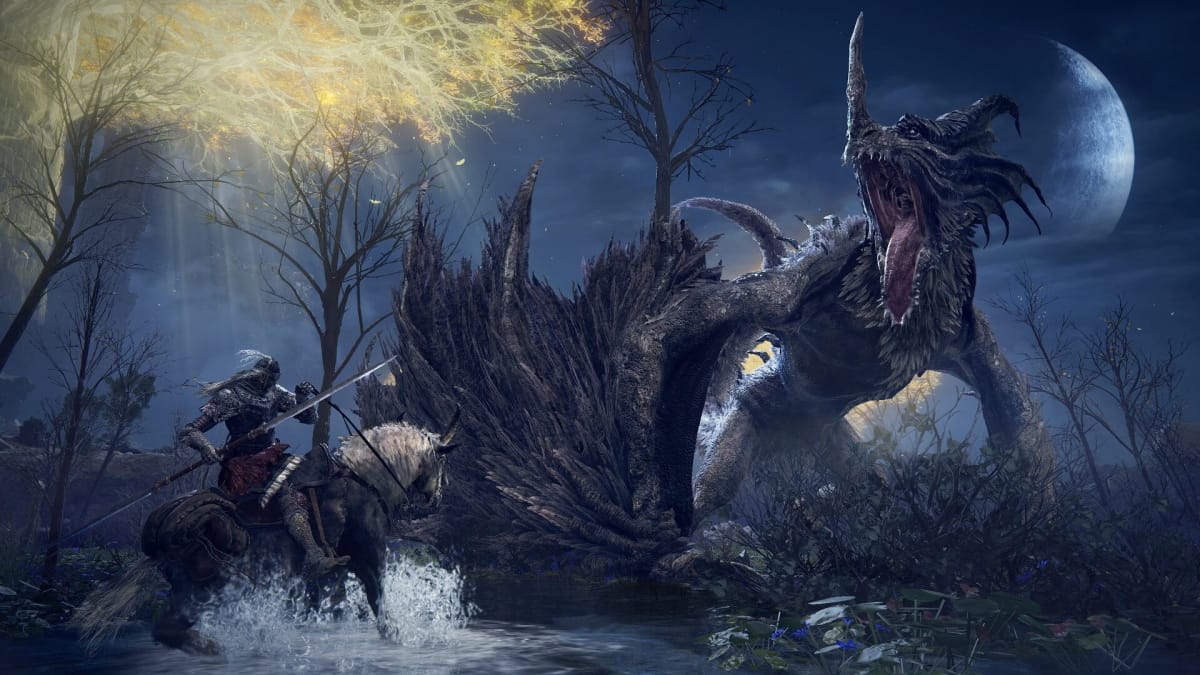Elden Ring isn't a far cry from what From Software fans are used to when it comes to the Soulsborne genre. Naturally, this is what fans expect, as these games have unambiguous DNA. Is a Soulsborne game really a Soulsborne game without distinctive features such as bonfire-like checkpoints and rigorous boss battles? Probably not -- but Elden Ring definitely is.
When speaking at E3 2019, the director of Elden Ring and CEO of FromSoftware, Hidetaka Miyazaki, made it clear to fans that Elden Ring is much more of an evolution of the Dark Souls series than it is a sidestep, like Sekiro: Shadows Die Twice was. With this in mind, I went into the network preview eagerly expecting open-world Dark Souls. What I played was just that, but I harshly underestimated how much an open world would improve the Dark Souls experience.

Elden Ring's Open World Reduces Redundant Grind
As previously mentioned, Soulsborne games are known for much, but the greatest virtue of Dark Souls, Sekiro, and Bloodborne are the bosses. Enemies of the world -- and even the world itself -- can be dangerous in a Soulsborne game, but the difficulty is truly accentuated when one comes across a boss. Many bosses, like Dark Souls III's Pontiff Sulyvahn and Sekiro's Genichiro Ashina, are seemingly impenetrable walls that players can only bring down with trial and error, willpower, and sometimes luck. This most recent entry is no stranger to bosses like this, as the three bosses I came across were just as strenuous, but Elden Ring's open world design changed the philosophy in which I approached them.
The first of these bosses was the Tree Sentinel, a gold-clad cavalry knight that absolutely wrecks you the moment you step into the open world. Naturally, I threw myself back into the field, fraying my will for battle as I died time and time again. I felt stumped, as most of his attacks took over half my health. In any other Soulsborne games, I would simply have to go fight another boss or grind up levels by running through the dungeons over and over, but with Elden Ring, I realized I didn't have to fight the Tree Sentinel. I could just… walk past him. So that's what I did -- and it worked.
I followed the glowing path, came across a church where a shopkeeper beckoned me into safety, and a site of Grace (Elden Ring's token bonfires) let me make a checkpoint there. Instead of throwing a few hours into a boss before realizing you're not at the correct level, Elden Ring hands you the valuable option to go and explore the open world before conquering another boss, which makes the game stand out more so than it seems it would.
Elden Ring is still a Soulsborne game, but I had made natural progression beyond a mindless mob grind for levels, something prior games in the Soulsborne genre have failed to offer.
After my retreat to the church, I made an expedition into the forest where I slew some enemies, wandered upon an encampment, and acquired a horse. Horses aren't just for traveling, they serve their purpose in battle too, and the Tree Sentinel was much more manageable when I was evenly matched with a steed of my own. With my horse, some additional levels, an upgraded longsword, and some sparked confidence, I dashed back to the Tree Sentinel and engaged once more. Did I win immediately? No, Elden Ring is still a Soulsborne game, but I had made natural progression beyond a mindless mob grind for levels, something prior games in the Soulsborne genre have failed to offer.

More Builds, Less Build Commitment
Elden Ring's open world is much more akin to The Legend of Zelda: Breath of the Wild than anything; not because of the world's design or the way you explore it, but rather how its features provide gameplay benefits to the player. Oftentimes "open world" is used as a buzzword to lure unsuspecting gamers into a mediocre title full of redundant, meaningless tasks (looking at you, Far Cry 6). In Elden Ring, this isn't the case, and it's evident by systems like crafting. Elden Ring presents a beneficial crafting system that grants items that, in other games, would have to be purchased or found in the world. This meant that these items had a tendency to be limited and rare, so I rarely found myself using them. In Elden Ring, items like Fire Grease can be found out in the world, but they can also be crafted with materials that aren't limited. Root Resin and Smouldering Butterflies can be synthesized into Fire Grease, which makes the item way less limited than it needs to be.
This also allows players to experiment more with items in battles. In Dark Souls, the electric-applying Golden Pine Resin can be found in the world, but it's relatively uncommon so there's not a lot of room to experiment with it. Some bosses might be weak to it, but I can't use it on every boss to find out because I'm wasting potential items. In Elden Ring, as long as I didn't mind heading out into the world to find the materials, I could craft as many of the Fire Grease items as I wanted. Fire Grease applied fire to my weapon and thus meant my strikes would set enemies ablaze, something that can be particularly helpful as extra damage in boss battles. This made my approach to bosses more methodical than it would be in other Soulsborne games. Often times in Dark Souls, I would simply fight a boss until I perfected its movement patterns and overcame it. It was possible to make minor adjustments to my build, but Elden Ring's systems encourage it more so than any before.
Toppled towns marked by a dragon's blazing scorch, seaside ruins traversable only by horse, and lootable enemy convoys guarded by powerful foes were some of many facets I came across as I stepped away from the path the game ushered me onto.
In Elden Ring, I could follow the path of grace to progress the story and fight another boss, but the open world's rewarding lure beckoned me into more exploration. Toppled towns marked by a dragon's blazing scorch, seaside ruins traversable only by horse, and lootable enemy convoys guarded by powerful foes were some of many facets I came across as I stepped away from the path the game ushered me onto. In some of these places, I found more Ashes of War -- a new tool that allows one to tailor abilities and stat scaling to their weapons. As a mage, a sword might not fit my build, but a new Ash of War offered magical attacks and Intelligence damage scaling, making it a much better fit. These Ashes of War can be switched on and off at the sites of grace, and although not every Ash of War will fit with a particular build, the ability to experiment with them without any commitment was welcome in a game that offers an immense amount of options for how to play.
There are bound to be more discoverable ways that Elden Ring shapes the Soulsborne formula into something more streamlined and enjoyable, but much of which I could explore was limited to a "small" (in relativity to the visible area) region of the map. As crazy as it sounds, the ability to actually jump in this game opens the world up in ways that previous games limited. Features like jumping, crafting, the open world, horse exploration, Ashes of War, events on the map, Breath of the Wild-styled dungeons, and more all tailor a refined Soulsborne experience. I'd go as far as saying, based on the Elden Ring network test, Miyazaki is aiming to make this the quintessential Soulsborne experience.
Have a tip, or want to point out something we missed? Leave a Comment or e-mail us at tips@techraptor.net













